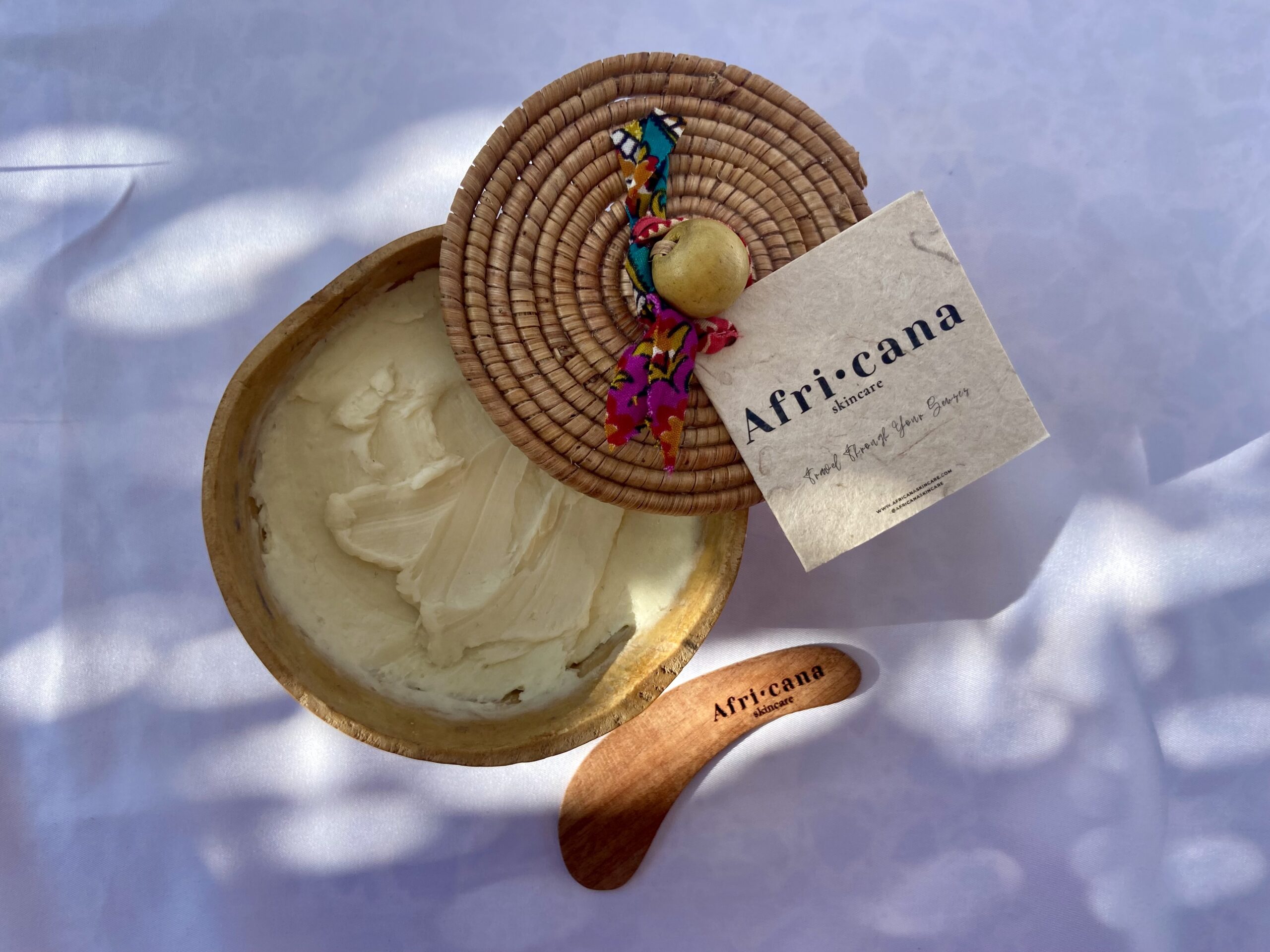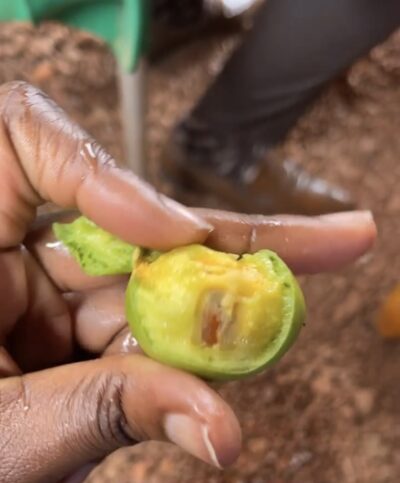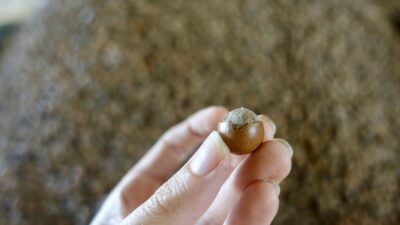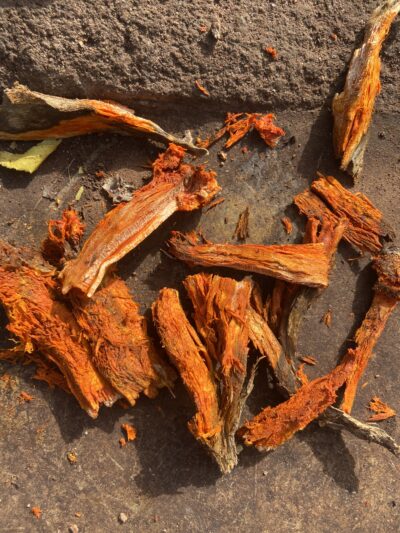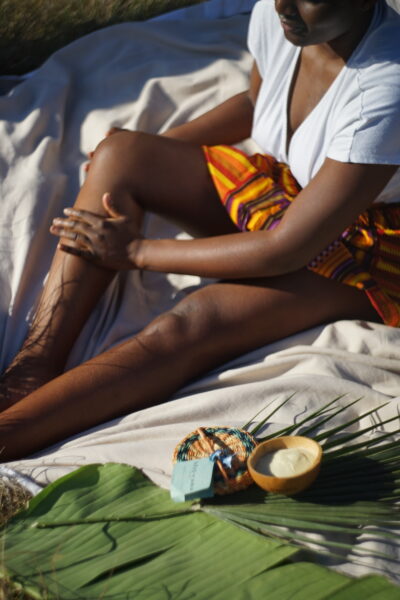In this post, you will find a brief guide on the most important points you should know about shea butter; what is
What is shea butter made from?
Ghanaians have used shea butter for centuries. It is an African ancestral beauty product that has been passed down from generation to generation, mother to daughter, grandmother to granddaughter. In many African countries, she butter is also known as the “African liquid gold”.
It comes from the nut of the Shea tree that grows in the Savannah region from West Africa to East Africa. A fun and interesting fact about the shea fruit is that every part of the fruit is useful!
You can eat the skin of the fruit which will provide you with numerous health benefits, the “meaty” part of the fruit (before you get to the nut) is very delicious to taste and of course the nut itself produces the almighty shea butter!
- Shea nut
Different types of shea butter
We can distinguish between four different types of shea butter. First of all we have the traditional west African golden shea butter. This is one of the “basics” of shea butters, let’s put it that way. It is the one that follows the step-by-step process.
We then have a shea butter which is yellow in colour. It follows the exact same process as the golden shea butter with one little difference, borututu root is added to it during the boiling process, the reason why it becomes yellow in colour. This root comes from the borututu tree (Cochlospermum angolensis) which is native to Africa.
It’s valued for its tonic and healing attributes, being served as an infusion or tea as a way to treat an assortment of health conditions. When added to the shea butter, it is especially good for people who have several skin conditions such as eczema or psoriasis.
The third type is the East African butter. This shea is lighter in colour and softer/creamier in texture. This is because the East African butter contains more oleic acid (a fatty acid) than the West African one which has more stearic acid, hence why it is harder in texture.
Last but not least, and this is the shea butter to avoid, we have the refined shea butter which is completely white in colour. The refinement process removes the color and scent and in the process most of the natural healing properties.
You can also watch this brief video of Rocky, a shea butter seller at Accra’s central market, telling us about the difference between the golden shea butter and the yellow shea butter.
Uses of shea butter
Skin care
This is the use this ancestral product is most known for. Apart from being an excellent skin moisturiser, it is also great for people who have certain skin conditions such as eczema or psoriasis.
It also doesn’t contain any water, this makes it feel a little “heavier” on your skin when applying. However, this is much more beneficial for your skin than a water-based product that absorbs “faster”. Yes, it may seem to absorb faster, but it is not really absorbing into your skin but rather evaporating.
The fatty acids that it contains, absorb directly into your skin, creating a barrier in your skin to protect it from external climate factors ( great for harmattan season!) as well as aiding in boosting collagen production.
Hair and scalp
Shea butter is specially great for dry or frizzy hair. If you have dry ends, apply it as a leave-in conditioner after washing your hair.
Prevent cracked elbows, hands and feet: also amazing during winter time when maybe you experience your hands getting red and cracked (sometimes even bleeding).
Cooking
Did you know that in the Northern part of Ghana they still use the unrefined golden shea for cooking? Instead of using sunflower oil or olive oil, you can try and use shea butter! A tip when using it for cooking purposes, is to add some ginger or onion before, in order to remove the odour.
Check out one of our “cooking with shea butter” videos!
Newborn babies
When babies are born, they are bathed in a traditional way. After bathing, they are covered in shea butter. It is believed that it will protect and make their skin much stronger.
Stretch marks
Shea can be used to prevent stretch marks by pre and post natal mothers. They also sometimes use it during the breast-feeding period to apply it on their nipples.
Nasal Congestion
Many Ghanaians apply shea inside their nasal passages as a way to reduce mucosal damage. Also in cases of allergies, sinusitis or the common cold.
Benefits of shea butter
Benefits for face and body:
Highly moisturizing, protects skin from environmental damage, softens skin (great for cracked heels, dry lips and cuticles), restores skin elasticity, prevents and heals stretch marks , has anti-inflammatory properties that help relieve symptoms caused by various microbes.
Benefits for hair:
Super moisturizing effect, leading to stronger and shinier hair.
Other benefits:
Excellent for moisturizing your baby’s skin, especially for treating diaper rash, contains a small amount of UV protection (SPF 6), protects and moisturizes new tattoos, excellent during pregnancy to prevent stretch marks, nasal decongestant.
How to apply Africana Skincare shea butter?
Scoop out a small amount with clean hands or spatula. Rub in your hands before applying it on your skin. Rub onto your skin until it is completely absorbes.
FAQ’s
- Why does it have that smell? One of the steps in the shea butter making process is roasting the nuts, hence its nutty aroma. If you don’t like the smell, you can melt the shea or whip it and add a couple of drops of your favorite essential oil
- Can I use it during pregnancy? Yes. It is a 100% natural product and great to treat and prevent stretch marks
- How can I melt it? You can melt it in a number of ways. 1. Rubbing it between your hands 2. In a water bath 3. Leave it in the sun or radiator for a while 4. In an essential oil burner
- Is it good for all skin types? You can use on all skin types, but it is especially recommended for dry and damaged skin due to its high hydration power. You can also use it on acne-prone skin, as it is a non-comedogenic product. That is, it does not clog the pores of the skin. In any case, it is always better to consult your doctor first.
- How to use it for hair? There are several ways to apply it onto hair (subscribe to our newsletter and download our free product guide for more info) but the most common way is to melt a piece between your hands and apply it to the ends with damp hair)
- How long can 100g last me for? It will depend on how often you use it. If you use it every day, 100g of shea can last 3-6 months
- Does it expire? It does not actually expire, it simply begins to lose its qualities after 12 months, so we recommend using it before that period.
info@africanaskincare.com

